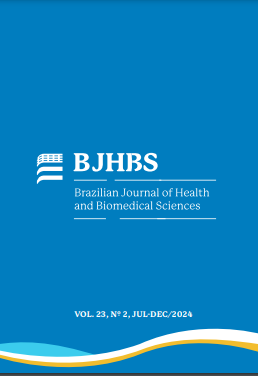Venous thromboembolism during air travel in pregnant women
DOI:
https://doi.org/10.12957/bjhbs.2024.88700Resumo
Introduction. Air travel (AT) has become an integral part of modern life, including for pregnant women who may need to travel for a variety of reasons. While the overall risk of venous thromboembolism (VTE) during AT is low, specific populations, such as pregnant women, face significantly higher risks. This study explores the relation between air travel and VTE in pregnant women, by
examining the risk factors, epidemiology, and preventive strategies. Objectives. To analyze the incidence of VTE in pregnant women during air travel, identify associated risk factors, and evaluate prophylactic measures to mitigate these risks. Methodology
and Resources. A comprehensive review of existing literature was conducted, focusing on studies related to the incidence of VTE in air travel, especially in pregnant women. Data from epidemiological and review studies were reviewed to assess the risk factors and the efficacy of prophylactic measures, including mechanical and pharmacological interventions. Results and Discussion: The review indicates that pregnant women are at an elevated risk for VTE, especially during flights that last longer than 6 hours. Contributing factors include venous stasis, hypercoagulability, and hypoxia. Prophylactic measures, such as the use of graduated compression stockings and low molecular weight heparin (LMWH), are recommended for high-risk individuals, although routine pharmacological prophylaxis is not generally indicated. Conclusion: The study highlights the importance of a personalized risk assessment for pregnant women who plan to travel by air. While general preventive measures should be universally recommended, pharmacological prophylaxis should be reserved for high risk travelers. Further research is needed to refine the guidelines for pregnant travelers and ensure their safety.
Downloads
Downloads
Publicado
Como Citar
Edição
Seção
Licença
Copyright (c) 2024 Brazilian Journal of Health and Biomedical Sciences

Este trabalho está licenciado sob uma licença Creative Commons Attribution-NonCommercial 4.0 International License.
Termo de transferência de direitos autorais/conflitos de interesses: após o aceite final do artigo para publicação, os autores deverão enviar o termo de transferência dos direitos assinados pelo autor principal representando cada um dos autores. Neste termo deverão ser declarados quaisquer conflitos de interesses.
